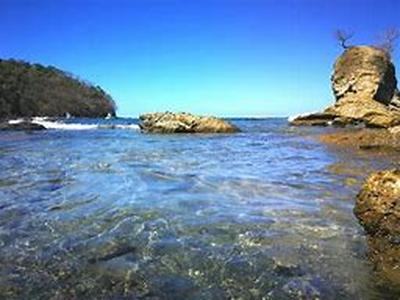
Costa Rica, San Jos Where Almost One Third Of The Population Is, Sets At About One Thousand One Hundred Seventy Meters Altitude And Has An Average Yearly Temperature Of 20.6C.The Costa Rica Weather On The Majority Of The Forests In North-West Can Have Very Strong Winds Which Can Occasionally Reach Speeds Of Ninety Kilometers Per Hour In The Lowlands Although The Average Is About Twenty Kilometers Per Hour. The Temperatures Of Costa Rica Weather Are Varying From Tropical On The Coastal Plains To The Mild In The Inner Highlands Depending On The Altitude. The Central Upland Has Temperatures That Average Around Seventy-two Fahrenheit, Whereas The Sea Level Hover Around Eighty-two Fahrenheit. The Pacific Lowlands And The Atlantic Coast Range Approximately Eighty-nine Fahrenheit With Steadily Decreasing Temperatures At About Two Degrees Fahrenheit For Each One-thousand Feet Altitude Increase. The Countries Highest Mountain Peak, Chirrip, Have Temperatures That Dont Usually Rise Above Forty Eight Fahrenheit. Meseta Central And San Jose Have Average Year-round Temperatures Of Seventy Four Fahrenheit. Costa Ricas Location Near The Equator Allows For Daylight Hours To Differ Only Slightly During The Two Seasons. Sunrise In Costa Rica Is Around 5 A.m. And Sunset Is Around 6 P.m. Since The Suns Path Is By No Means Far From Overhead, Seasonal Differences In Temperatures Change Very Little.All Over The Country, Costa Rica Weather Has The Warmest Months On March To May, While The Cool Winds Known To Locals As Aliosis, Travel From The Northern Latitudes During December Through February Making Temperatures Go Lower, Mainly On The Northern Pacific Coast Where Even Some Days On Summer Months Or Dry Season Can Get Rather Cool. The Aliosis Winds Are Accountable For Carrying Moisture In The Form Of Mists To The Slopes Of The Tilarn Mountain Range. These Mists Maintain The Wonderful Cloud Forest Ecosystem.The Most Tremendous Costa Rica Weather Temperature Rise And Fall Happen During The Dry Season When The Clear Skies At Nigh Permit More Heat Loss Through Radiation. The Nights Are Generally Warmer During The Wet Season When The Heat Built Up During The Day Is Trapped In The Clouds.Being A Tropical Country, Costa Rica Always Has Some Type Of Rain. There Two Major Seasons That Costa Ricas Climate Is Divided Into; The Dry And The Rainy Season. January To May Is The Dry Season, While May To December Is The Rainy Season. These Two Separate Weather Systems Of The Atlantic And Caribbean Oceans Come Together Above Costa Ricas Mountains And Jungles. The Oceans In Humid Latitudes Give Moisture And The Mountains Provide Condensation Giving A Yearly High Rainfall Average.





